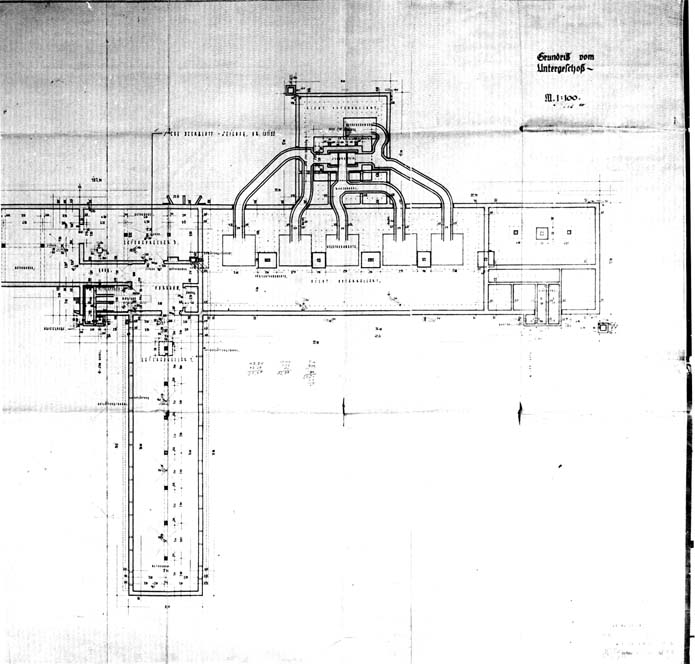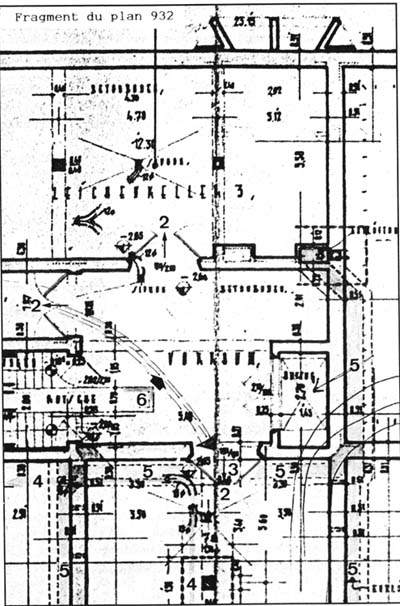| Drawing 932(p) |
 |
|
 |
Photo A |
|
| 2. |
The direction in which the double doors of the three Leichenkeller opened is shown as being from the outside (corridor and vestibule) to the inside [see sketch]. If large numbers of people were gassed in Leichenkeller 1 with such an arrangement it would have been virtually impossible to open the doors, which would have been blocked by corpses; |
| 3. |
A single door is easier to make gas tight than a double door like that planned for Leichenkeller 1; |
| 4. |
The drains of Leichenkeller 1, being connected to the others in the western part of the building, run directly into the common sewer (Absetzgrube), so that if gas were used in Leichenkeller 1, there would be a chance of toxic gas penetrating rooms on the ground floor (see drawing 932 (r), where the trace of the drains of Leichenkeller 1 is underlined in blue]; |
| 5. |
The ventilation and air extraction system of Leichenkeller 1 was designed for a morgue, not a gas chamber, though in the end it was used without modification; |
| 6. |
The central location of the corpse chute, with the bottom end advancing well into the vestibule between the three Leichenkeller would be in the way of people going from the undressing room (Leichenkeller 2) to the gas chamber (Leichenkeller 1). |
|

